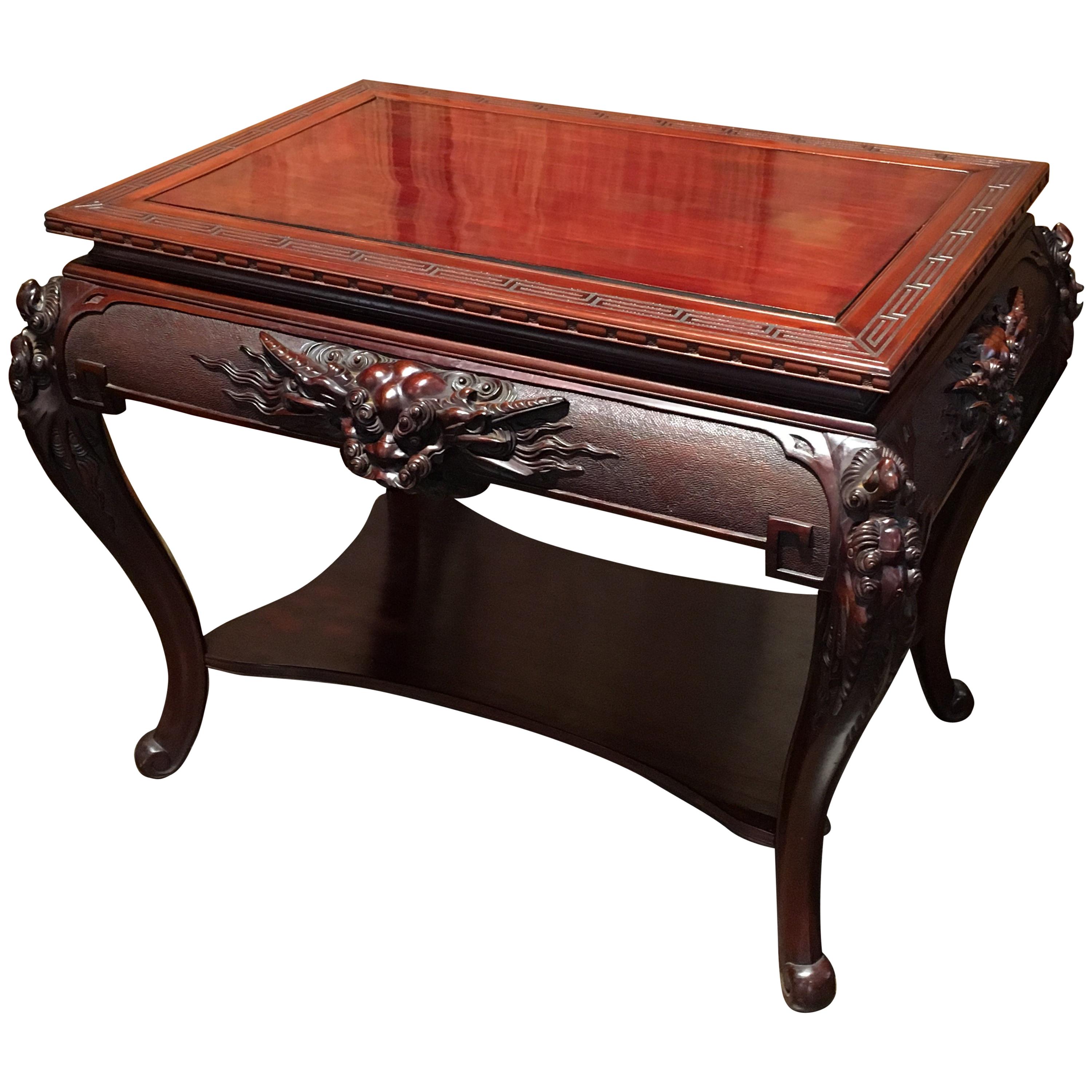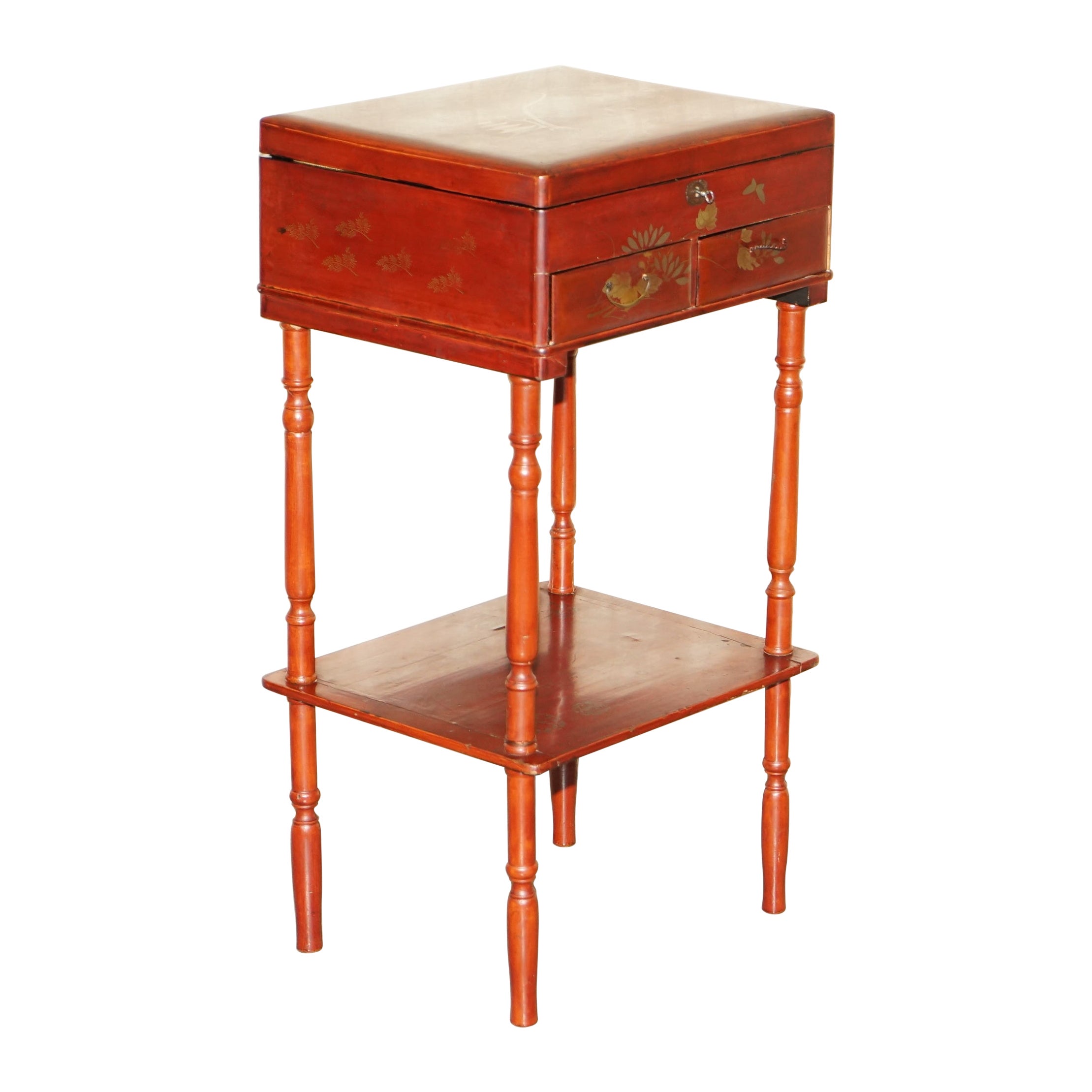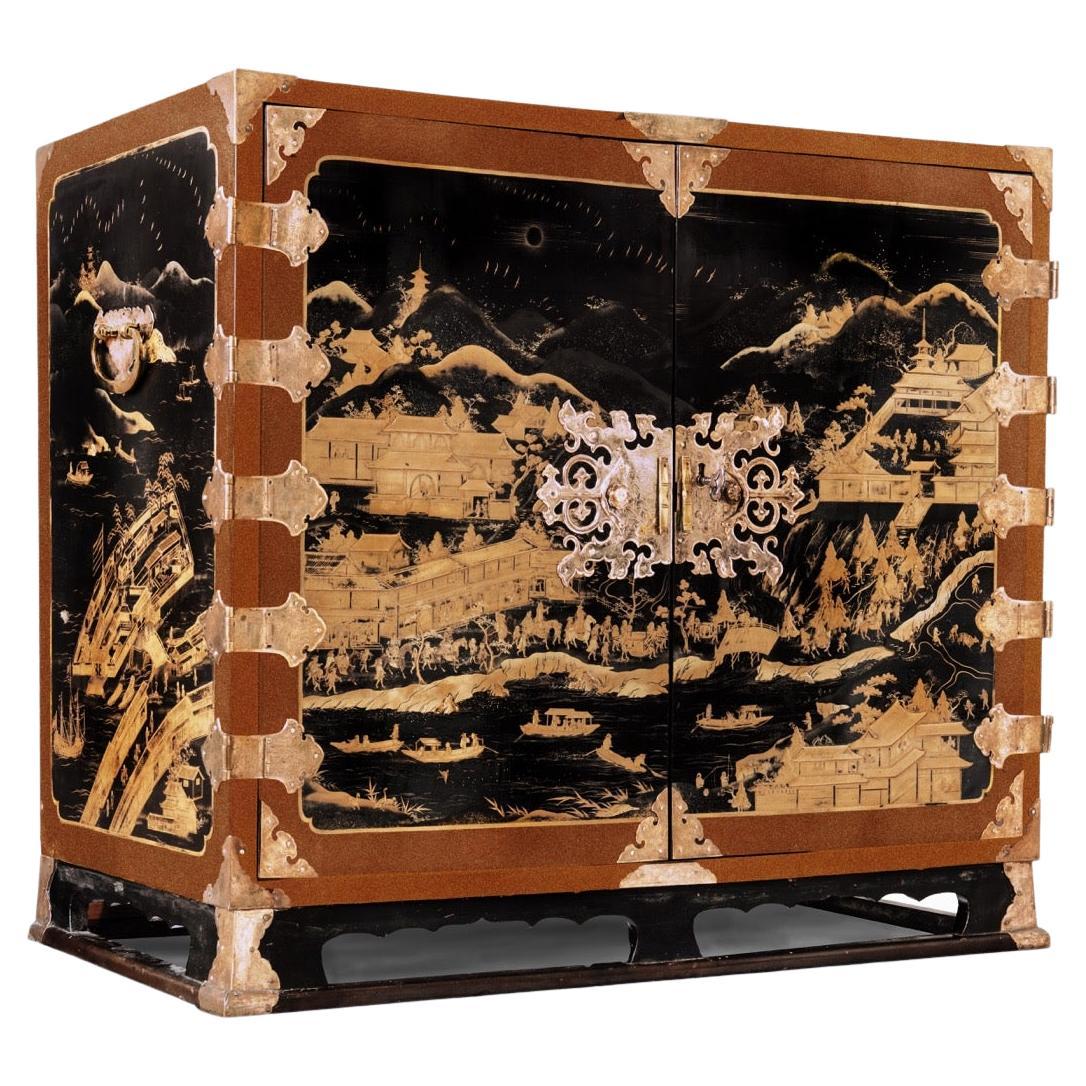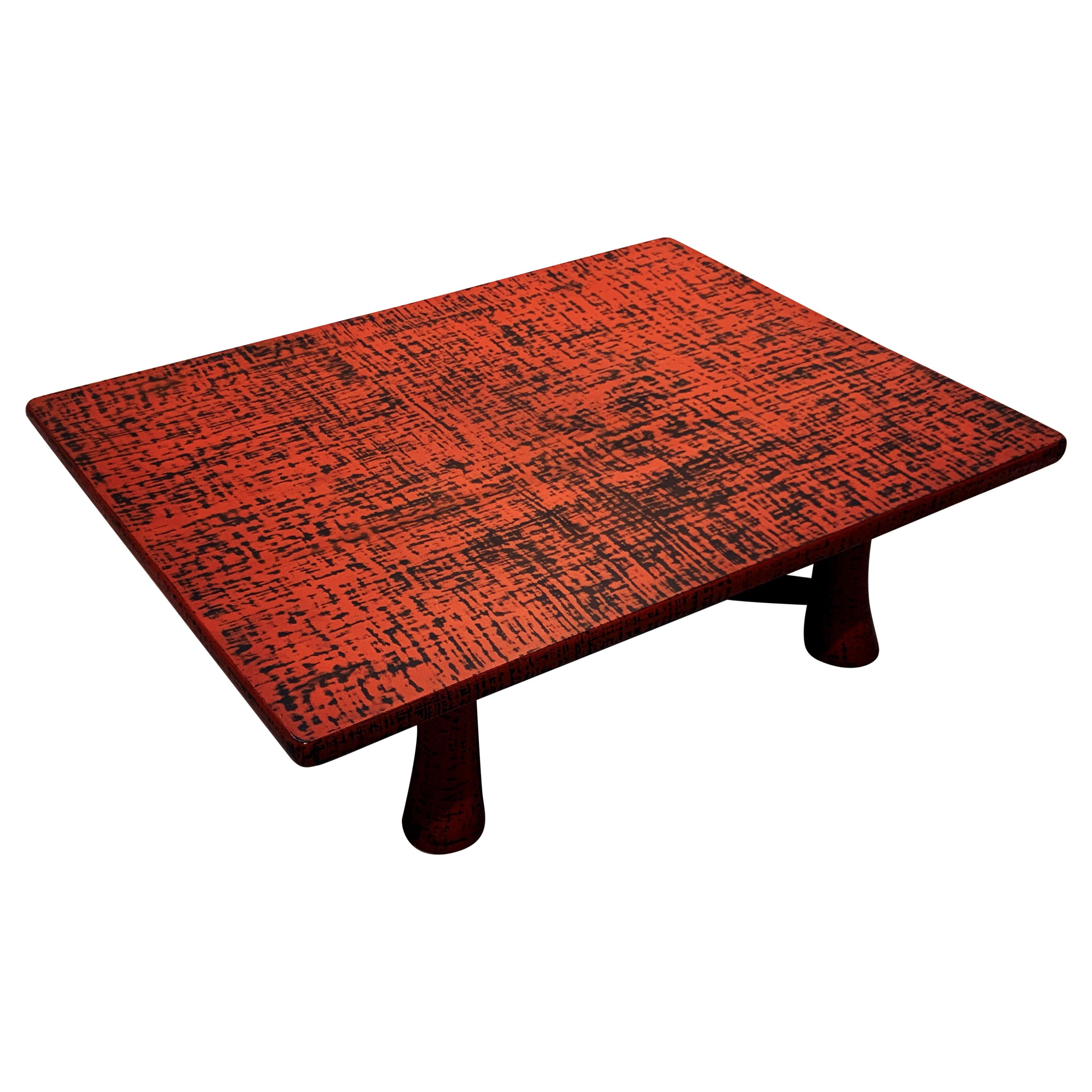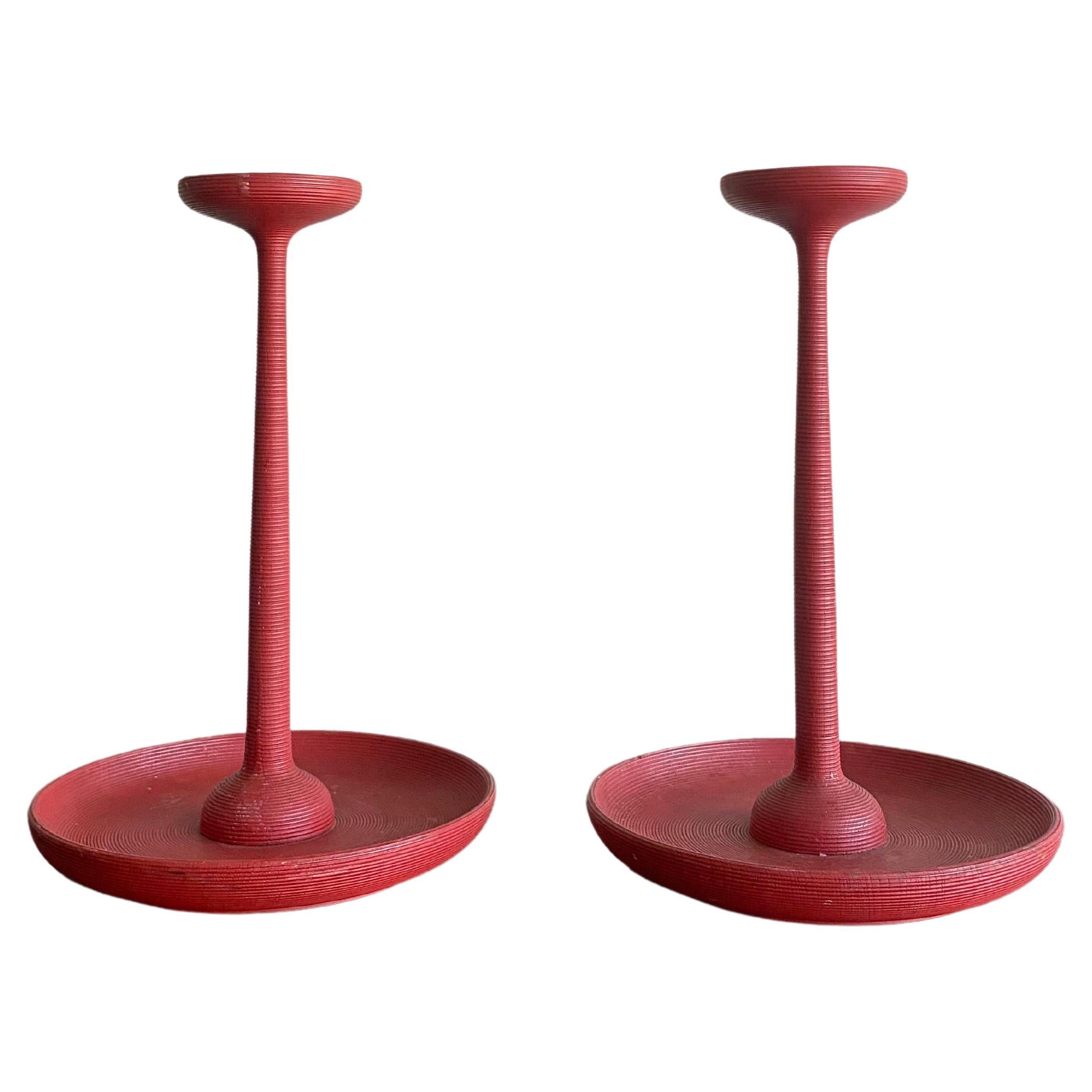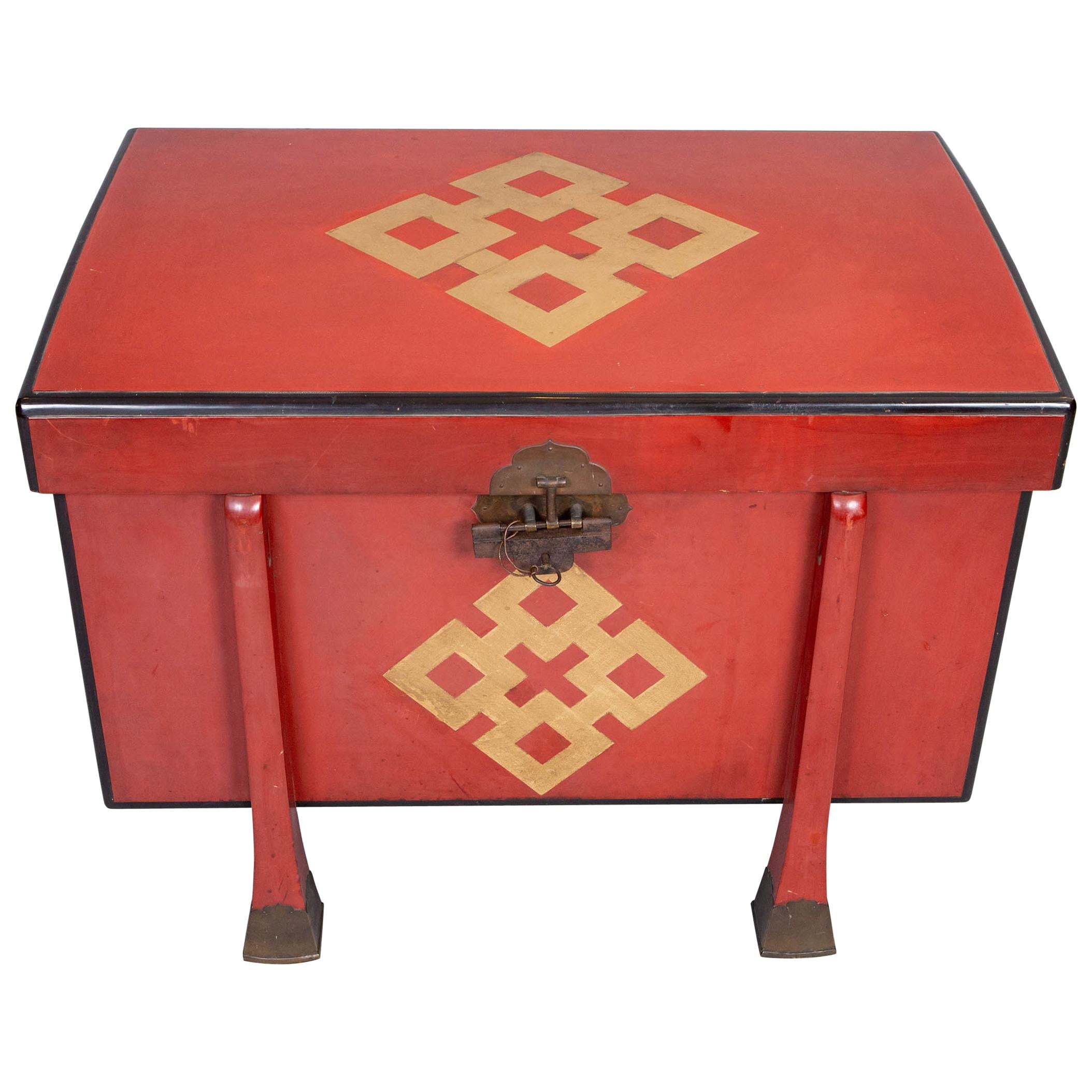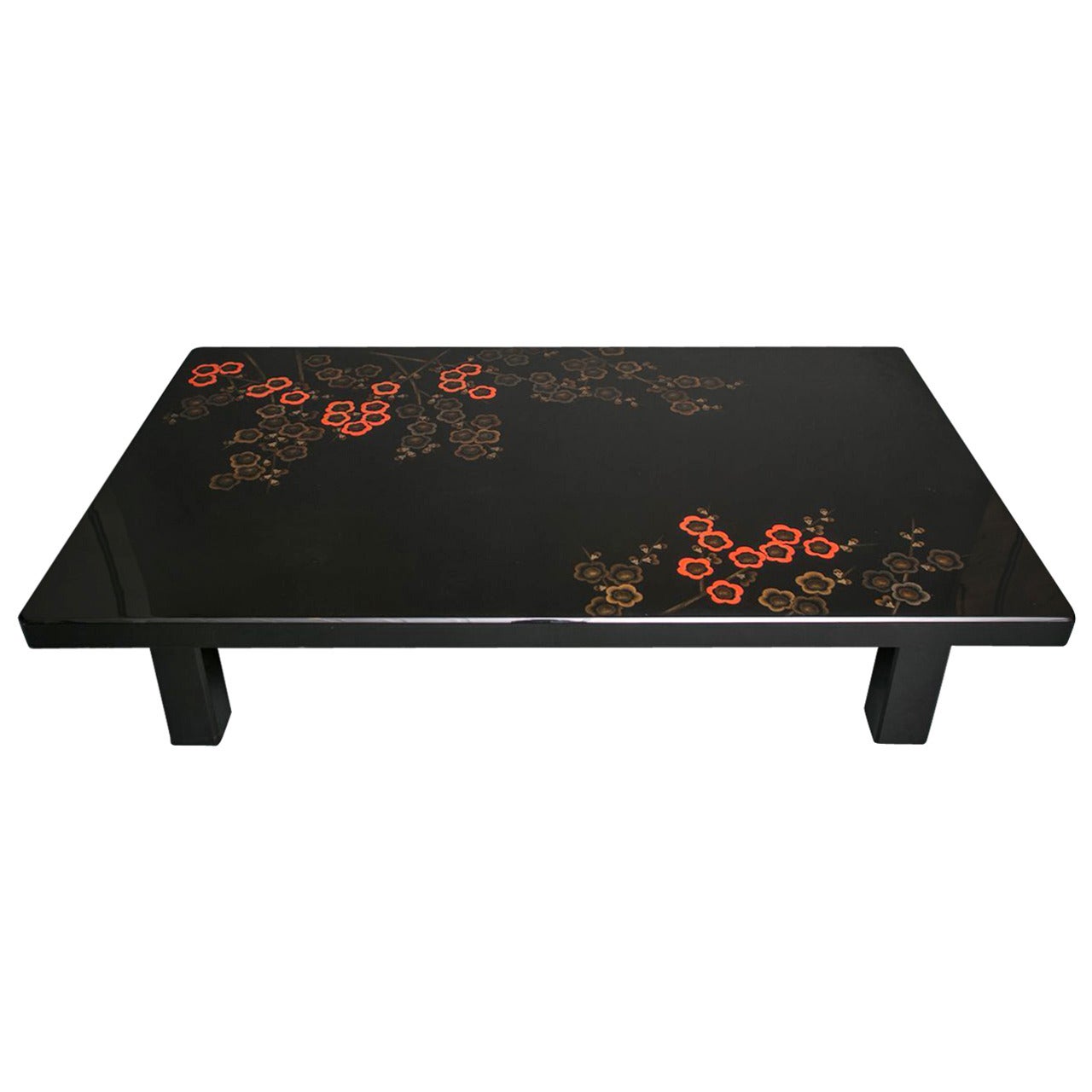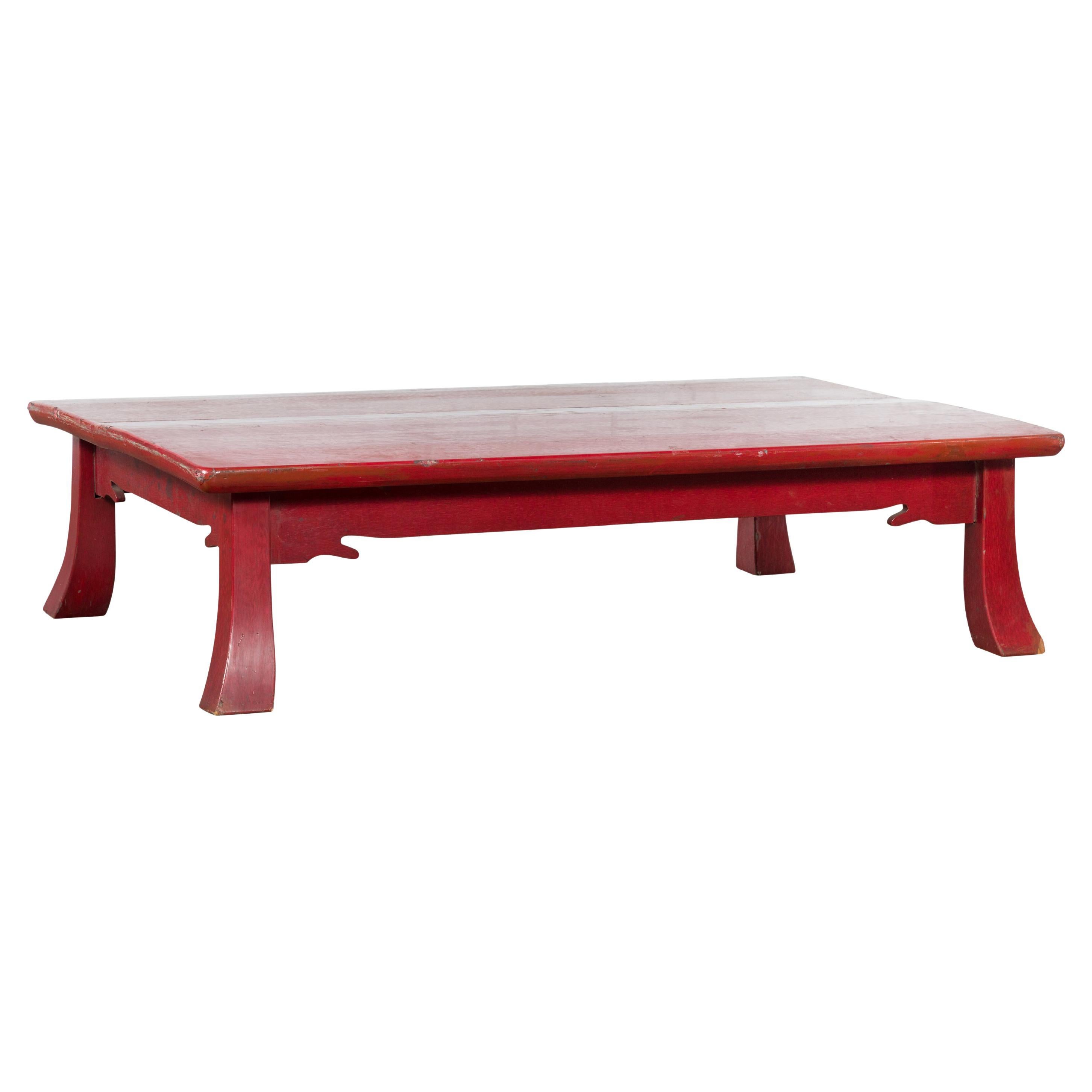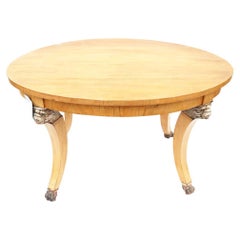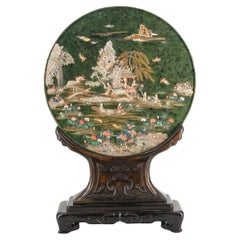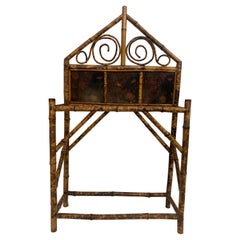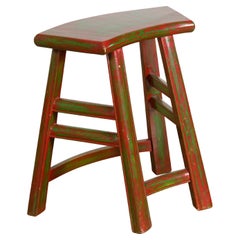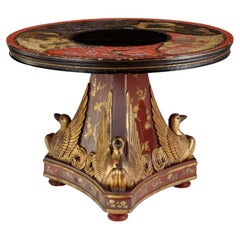
Japanese Export Red Lacquer Center Table with European Pedestal
View Similar Items
Want more images or videos?
Request additional images or videos from the seller
1 of 8
Japanese Export Red Lacquer Center Table with European Pedestal
About the Item
- Dimensions:Height: 31.25 in (79.38 cm)Diameter: 43.25 in (109.86 cm)
- Style:Meiji (Of the Period)
- Materials and Techniques:
- Place of Origin:
- Period:
- Date of Manufacture:circa 1850s
- Condition:Wear consistent with age and use. Minor losses.
- Seller Location:New York, US
- Reference Number:1stDibs: LU6079232677712
About the Seller
No Reviews Yet
Vetted Seller
These experienced sellers undergo a comprehensive evaluation by our team of in-house experts.
Established in 1990
1stDibs seller since 2021
Typical response time: 1 to 2 days
More From This SellerView All
- Russian Empire Period Birch Center TableLocated in New York, USOur Russian Empire period oval table with birch veneer with silver gilt eagle-mounted legs and paw feet measures 35 by 49.5 inches and 30 inches ...Category
Antique Early 19th Century Russian Empire Furniture
MaterialsBirch
- Pair Chinoiserie Red Japanned Candelabra Table LampsLocated in New York, USOur beautiful pair of candelabra in the Chinoiserie style date from the early 20th century, and feature four candle arms with candelabra-size sockets, and fine red japanned...Category
Early 20th Century Unknown Chinoiserie Table Lamps
MaterialsWood
$11,000 / set - Meiji Japanese Tsuda Family Embellished Jade Table Screen on StandLocated in New York, USOur large, antique circular jade exhibition screen from the Tsuda family is decorated with abalone shell, malachite, coral, lapis lazuli, pearl, and other hardstones. Depicted is a lakeside with figures in boats, colorful blooming flowers in the foreground, figures, pagoda and bridge and a rocky outcropping in the distance. The legendary Tsuda family in Kyoto is revered around the world for their embellished jade carvings, particularly snuff bottles. Works by Tsuda Sokan and his son Tsuda Fukuya, regularly appear at auction and can be found in prestigious collections worldwide. Recommended literature: Moss, Graham, Tsang, A Treasury of Chinese Snuff Bottles, The Mary and George Bloch...Category
Early 20th Century Japanese Meiji Sculptures and Carvings
MaterialsJade
- Art Deco Iron and Rouge Marble Center TableLocated in New York, USOur Art Deco period center or side table, 37 inches tall and 35 1/2 inches across, features a rouge marble top in iron frame supported by four uprights with stylized organic openwork...Category
Early 20th Century Art Deco Center Tables
MaterialsMarble, Iron
- Pair French Chinoiserie Red Lacquered Side Cabinets in Louis XVI StyleLocated in New York, USOur fabulous pair of French chinoiserie side cabinets with mahogany veneer feature ormolu bronze mounts and carved red lacquer panels on the doors depicting palaces and courtyard sce...Category
Early 20th Century French Louis XVI Cabinets
MaterialsBronze
- Arthur and Bond Sterling Silver Coffee and Tea Service in Japanese StyleLocated in New York, USOur extraordinary coffee and tea service from Arthur and Bond of London was retailed at their Yokohama location, circa 1880s-1890s. It features ornate ...Category
Antique Late 19th Century English Meiji Tea Sets
MaterialsSterling Silver
You May Also Like
- Early 20th Century Meiji Period Japanese Export Center Table with DragonsLocated in Austin, TXA powerfully carved Japanese export dragon center table, Meiji Period, early 20th century. Made for the export market, the rectangular table features a...Category
Early 20th Century Japanese Meiji Center Tables
MaterialsSoftwood
$2,860 Sale Price44% Off - Antique Japanese Export Lacquer Bamboo Stick StandLocated in Brea, CAAntique Japanese export lacquer and gilt bamboo stick stand, see more pictures, 46'' x 27.5'' x 10''.Category
Early 20th Century Japanese Meiji Lacquer
MaterialsBamboo
- Japanese Late Meiji Period Red and Green Lacquered Stool with Semicircular SeatLocated in Yonkers, NYA Japanese late Meiji period red lacquered stool from the early 20th century, with hand painted green accents, semi circular top, four splaying legs and side stretchers. Created in J...Category
Early 20th Century Japanese Meiji Stools
MaterialsWood
- Anglo Japanese Red Lacquer Sewing Table with Famboo Legs with Fitted InteriorLocated in GBWe are delighted to offer for sale this lovely hand made Anglo Japanese lacquer sewing table with period fitted interior. A very good looking and well made piece, made as an export piece during the Anglo Japanese period...Category
Antique Late 19th Century Japanese Anglo-Japanese Side Tables
MaterialsPine, Lacquer
- 17th Century Japanese Export Lacquer Cabinet with Depiction the Dutch TradepostLocated in Amsterdam, NLA highly important Japanese export lacquer cabinet with depiction of the Dutch East India Company tradepost Deshima and the annual Dutch delegation on its way to the Shogun in Edo Edo period, circa 1660-1680 H. 88 x W. 100.5 x D. 54 cm This cabinet includes a later European japanned stand, but also a modern powder-coated steel frame. The latter can be designed and added to your specific needs. The sides and front of the rectangular two-door cabinet are embellished in gold and silver hiramaki-e and takamaki-e on a black roiro lacquer ground with a continuous design. The two doors depict a long procession of numerous figures travelling on foot and horseback along buildings and a pagoda into a mountainous landscape. This is the annual court journey, Hofreis, of the Dutch from Nagasaki to the Shogun’s court in Edo. Three horseback riders are dressed as Dutch merchants and a fourth figure, probably het Opperhoofd, is seen inside a palanquin, norimon. Just about to cross the bridge, two men are carrying a cabinet like the present one. Many Japanese figures on either side of the procession are engaged in various activities; some play musical instruments on board of small boats, others are fishing; figures inside buildings are depicted playing go, and farmers are tending to their rice paddocks. The upper part of the right door shows a large mansion, probably the local daimyo’s castle, with men kneeling before a man in the central courtyard. The court journey fits in with the foreign policy of the shogunate which accorded a role to the VOC alongside China, Korea, and the Ryukyu Islands who also had to pay tribute. However, the VOC employees were traders, having low status in Japan’s social hierarchy, and they were received with less deference than were the state embassies from Korea and the Ryukyu Islands. Nevertheless, the contacts with the Dutch were a welcome source of information to the Shogun about Europe and European science and technology. The left side of the cabinet depicts, in mirror image, a rare view of the artificial fan-shaped Deshima Island, the trading post for the Dutch in Japan. The island, where the Dutch flag flies, is surrounded by small Japanese boats and an anchored three-masted fluyt (cargo ship), flying Dutch flags, with on the stern the VOC monogram. On the bottom right a busy street of Nagasaki is shown, bordered by shops and leading up to the stone bridge. On the island the trees are beautifully painted, two cows can be seen, and the flagpole, all in very fine detail. Dutchmen and enslaved Malay are visible outside the buildings and two Japanese figures, probably guards, sit in a small hut in the centre. A maximum of fifteen to twenty Dutchmen lived on the island at any time and soldiers or women were not allowed. Restrictions on Deshima were tight, and the merchants were only allowed to leave the island by special permission. The Opperhoofd had to be replaced every year, and each new Opperhoofd had to make a court journey to pay tribute, present gifts, and to obtain permission to Margaret Barclay eep on trading. In the distance, many birds fly above the hills and a four-story pagoda can be seen. The right side of the cabinet is painted with other horse riders and their retinue journeying through mountains. The pair of doors to the front open to reveal ten rectangular drawers. The drawers are decorated with scenes of birds in flight and landscapes with trees and plants. The reverse of the left door with two thatched buildings, one with a ladder, underneath a camelia tree with large blooms; the right door with a three-story pagoda nestled among trees and both doors with a flying phoenix, ho-oo bird. The cabinet, with elaborately engraved gilt copper mounts, hinges, lock plates and brass handles, is raised on an 18th-century English japanned wood stand. A pair of large cabinets...Category
Antique 17th Century Japanese Edo Lacquer
MaterialsCopper, Gold
$1,375,444Free Shipping - Japanese Orange Red Negoro Lacquer Low Table, Taisho Period, 1920s, JapanLocated in Austin, TXA striking orange-red lacquer Japanese low tea or coffee table decorated in the negoro lacquer technique, Taisho period, 1920s, Japan. Of simplistic design, the table has a wonder...Category
Vintage 1920s Japanese Taisho Coffee and Cocktail Tables
MaterialsSoftwood, Lacquer
Recently Viewed
View AllMore Ways To Browse
Japanese Head
Japanese Market
Wood Gilt Europe
Dutch Japanese
Japanese Dutch
European Antique Markets
Antique Wood Effect
Inlaid Lacquer
Eastern European Furniture
Pedestal Head
Asian Antique Arts
Red Pedestal
Antique Furniture Research
Researching Antique Furniture
Asian Inlaid
Japanese Lacquered Table
Japan Lacquer Table
Serve Gilt
